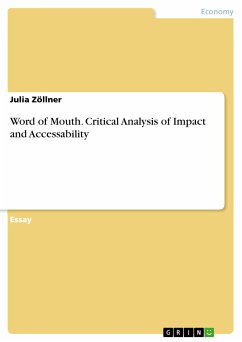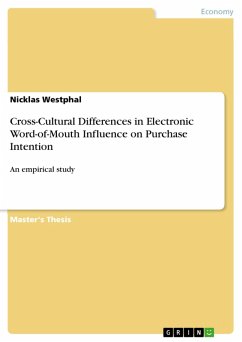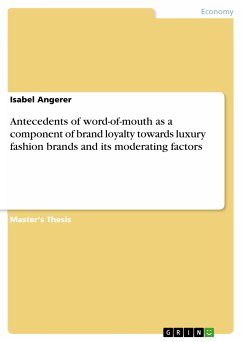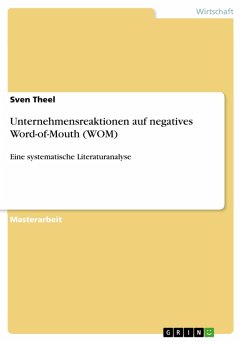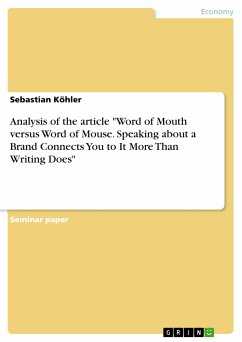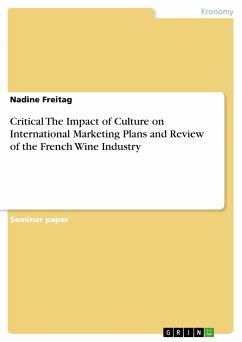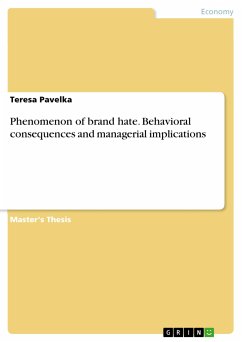Essay from the year 2015 in the subject Business economics - Offline Marketing and Online Marketing, grade: 70, Kingston University London, course: Buyer Behaviour, language: English, abstract: This report will discuss whether Word-of-Mouth (WOM) communication is the most powerful force for change but the least accessible. Therefore, latest research findings will be examined in regard of common patterns of WOM. Additionally, prospective aspects for further research will be defined. Firstly, the research of Word-of-Mouth reaches 50 years back discussed by Arndt, Dichter and Day. According to Arndt Word-of-Mouth is defined as "oral, person-to-person communication between a receiver and a communicator whom the receiver perceives as non-commercial, concerning a brand, a product or a service." The definition includes three important aspects. Firstly, Word-of-Mouth is always interpersonal and can be differentiated from mass communication such as advertisement. It also indicates that Word-of-Mouth is excluded from third-party sources such as consumer reports, rating portals and social media content because it is not transmitted directly from person to person. Secondly, Word-of-Mouth given from a sender to a receiver is free of commercial intention or motivation because the sender is willing to talk about the product or service without being incentivised. However, the last aspect indicates that the content itself is commercial as the sender speaks about his experience with a particular brand or service. It can be said that the non-commercial transmission of information about a brand is an immense strength of Word-of-Mouth.
Dieser Download kann aus rechtlichen Gründen nur mit Rechnungsadresse in A, B, BG, CY, CZ, D, DK, EW, E, FIN, F, GR, HR, H, IRL, I, LT, L, LR, M, NL, PL, P, R, S, SLO, SK ausgeliefert werden.

